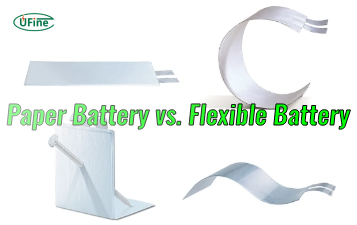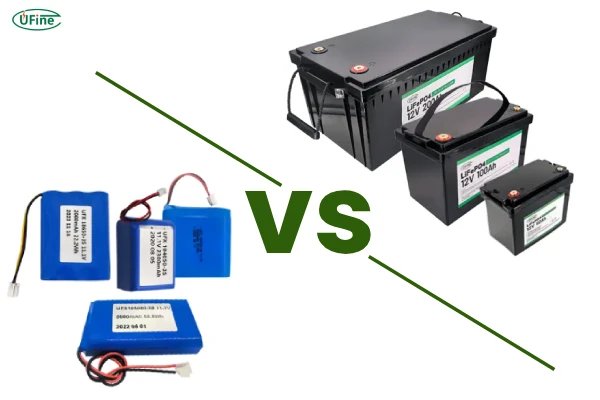Part 1. Is there a 12V LiPo Battery?
Yes—12V LiPo batteries do exist, and they’re widely used across industries and hobbies. In fact, they’re more common than you might imagine. Despite the variety of voltages you see in LiPo packs (like 7.4V, 11.1V, 14.8V, etc.), the 12V version is one of the most practical and versatile.
But here’s the thing—when we say “12V,” it’s often shorthand. The actual nominal voltage of a 12V LiPo battery is 11.1V, and when fully charged, it reaches about 12.6V. This little nuance can confuse beginners, but don’t worry—this article will clear everything up.
From powering drones and RC cars to backup energy storage, 12V LiPo batteries offer a compact, lightweight, and powerful energy source. They’re a favorite among tinkerers, engineers, and even medical device manufacturers.
Part 2. How many cells does a 12V LiPo battery have?
Understanding the number of cells in a battery is key to understanding how it works.
Each LiPo cell provides a nominal voltage of 3.7V. To reach higher voltages like 12V, manufacturers combine cells in series.
Complete Overview Lithium Batteries in Parallel and Series
So for a 12V battery:
- 3 cells in series (3S configuration) = 3.7V × 3 = 11.1V nominal
- Fully charged, it becomes 4.2V × 3 = 12.6V
Therefore, a 12V LiPo battery is typically a 3S battery, consisting of three individual cells connected in series. This design keeps the pack compact but powerful enough for medium to high-load applications.
It’s important to buy batteries that are clearly labeled, and know whether you’re getting a 3S LiPo pack. Also, matching the charger to this configuration is critical, as we’ll discuss later.
Part 3. 12V LiPo battery vs 12V lithium-ion battery
Both 12V LiPo and 12V lithium-ion batteries serve similar roles but perform differently. Let’s compare them across key areas:
| Feature | 12V LiPo Battery | 12V Lithium-Ion Battery |
|---|---|---|
| Weight | Lighter and more compact | Slightly heavier |
| Discharge Rate | High burst discharge (great for motors) | Lower discharge (for consistent power) |
| Shape Flexibility | Can be made ultra-thin or curved | More rigid cylindrical form |
| Cycle Life | 200–400 cycles | 500–1000 cycles |
| Safety | Sensitive to overcharge, puncture | Safer with built-in protections |
| Cost | Slightly more expensive | More affordable in many cases |
Part 4. Should you choose a 12V LiPo or 12V lithium-ion battery?
This choice depends on how you intend to use the battery. Here’s a breakdown:
Choose a 12V LiPo battery if:
- You need a lightweight, high-discharge power source
- Space is limited but performance matters
- You’re working with RC cars, UAVs, robotics, or portable medical devices
- You’re comfortable handling charging and safety requirements
Choose a 12V lithium-ion battery if:
- You need long cycle life and better thermal stability
- Your application is less power-hungry (like LED lighting or backup storage)
- You want a safer, lower-maintenance solution
Need help deciding? Ufine Battery offers expert consultation and custom battery solutions. We can help you weigh the pros and cons based on your project’s exact needs.
Part 5. Key considerations for buying a 12V LiPo battery
When you’re in the market for a 12V LiPo battery, you’ll find countless options. But not all batteries are created equal. Making the right choice is critical for safety, performance, and long-term reliability. Here are 7 key factors to keep in mind before you buy:
1. Voltage and Cell Count Compatibility
Always confirm the nominal voltage is truly what your device requires. A 12V LiPo battery typically means 3S (3-cell) at 11.1V nominal, 12.6V when fully charged. Ensure this matches your load requirements—some sensitive electronics can’t tolerate even small voltage variations.
2. Capacity Based on Usage Time
Think about how long you need your device to run. A larger capacity (mAh or Ah) means longer operation time, but it also adds size and weight. Make a realistic estimate based on current draw and runtime expectations, and always add a little buffer.
3. Discharge Rate (C-Rating)
The C-rating tells you how quickly the battery can safely discharge. If your application needs fast, high bursts of power (like motors or drones), go for a high C-rated battery. Otherwise, a low-to-mid C-rating will save you money and heat stress.
4. Size and Form Factor
Some projects have limited battery compartments. Measure your available space, and check the battery’s dimensions. Luckily, manufacturers like Ufine Battery offer custom-sized 12V LiPo battery packs tailored exactly to your space and design.
5. Safety Features
Look for batteries with built-in protection circuits, especially for overcharge, over-discharge, and short-circuit scenarios. These add a layer of peace of mind, especially if the battery will be used in high-temperature or high-impact environments.
6. Manufacturer Reliability
Don’t gamble on a no-name supplier. Choose a company that offers quality assurance, clear specifications, and technical support. That’s why so many choose Ufine Battery—a trusted Chinese manufacturer offering lithium batteries customized to your project’s exact voltage, capacity, and safety needs.
7. Availability of Compatible Chargers
Make sure you can easily find a compatible charger for your battery, or better yet, buy them as a pair. Chargers vary by voltage, cell count, and charging method. Ufine Battery can also help match your battery with the right charger to ensure safe and optimal charging.
Part 6. How much capacity do you need for your 12V LiPo battery?
Capacity is about how long the battery can power your device. It’s measured in milliamp-hours (mAh) or amp-hours (Ah). The higher the number, the more energy the battery holds.
But how do you know what you need?
Here’s a simple formula:
Battery capacity (Ah) = Current draw (A) × Desired run time (hours)
Let’s say your device pulls 2 amps, and you want it to run for 3 hours:
2A × 3h = 6Ah or 6000mAh
So, you’d look for a 12V 6000mAh LiPo battery.
Always add about 20% to your calculation. This buffer helps avoid full discharge, which extends your battery’s life. And remember—LiPo batteries degrade over time, so having a little extra capacity upfront is a smart move.
Ufine Battery can customize not just the capacity, but also the size, voltage, and discharge rate of your battery pack. Whether you need a 1,000mAh battery for a micro drone or a 20Ah pack for a mobile robot, they can make it happen.
Part 7. How to choose a 12V LiPo battery charger
Charging LiPo batteries isn’t something to take lightly. These batteries require dedicated balance chargers that can charge each cell evenly to prevent damage or danger.
Here’s what to look for in a 12V LiPo battery charger:
- Balance charging support for 3S (three-cell) packs
- Current control (usually 1C is recommended, meaning 1x the capacity in amps)
- Safety features like temperature monitoring and overcharge protection
- Battery type compatibility – Make sure it’s designed specifically for LiPo batteries
Never use a standard 12V power adapter. Doing so could overcharge the cells and risk fire or explosion. LiPo safety is no joke, but with the right charger, you’ll be fine.
If you’re ordering a custom battery from Ufine, we can recommend a charger that pairs perfectly with your pack, reducing the guesswork and maximizing safety.
Part 8. FAQs
Can I use a 12V LiPo battery in cold environments?
LiPo batteries are sensitive to temperature. In cold conditions (below 0°C or 32°F), their performance drops significantly. Capacity shrinks, and internal resistance increases, which can lead to premature failure. If you must use them in cold weather, pre-warm the battery or use a high-temperature LiPo variant, which manufacturers like Ufine Battery can provide on request.
What’s the shelf life of a 12V LiPo battery?
With proper care and storage, a 12V LiPo battery can last 2–3 years even if not regularly used. Store it at about 50% charge, in a cool, dry place, ideally around 15–25°C (59–77°F). Avoid full charge or full discharge during storage, as both shorten battery life.
How do I know if my 12V LiPo battery is damaged?
Warning signs include swelling, overheating, uneven charging, or reduced runtime. Swollen batteries must be disposed of immediately. Always handle with care and follow disposal regulations. Ufine can advise you on proper handling or replacements if needed.
Can I connect multiple 12V LiPo batteries together?
Yes, you can connect them in parallel to increase capacity (runtime) or in series to increase voltage—but you must match the batteries in voltage, capacity, and health. Mixing different batteries can lead to dangerous imbalances. Always consult with an expert or supplier like Ufine before creating battery arrays.
Are custom 12V LiPo batteries worth it?
Absolutely, especially for unique applications. Whether it’s about shape, voltage, or high discharge rates, a custom battery ensures maximum efficiency and safety.
Related Tags:
More Articles

Paper Battery vs. Flexible Battery: What’s the Difference and Which Is Better?
Paper vs. flexible batteries: learn the key differences, benefits, and which power source fits best for wearables, sensors, and smart tech.
What to Know Before Buying a Tiny LiPo Battery for Your Project
Tiny LiPo batteries are powerful and compact. Learn how to choose the right one for your project with specs, safety, and charging tips.
Bloated LiPo Battery: Will It Explode?
Will a bloated LiPo battery explode? Discover the causes, risks, safety steps, and expert tips to avoid disaster and protect your gear. Must-read safety guide!
12V 100Ah Lithium Ion Battery Price: Full Guide
Learn about 12V 100Ah lithium-ion battery price, from cost ranges to best brands, hidden fees, and how to get the best deal. A must-read for smart buyers!
Resistance and Conductivity: What It Means for Your Lithium Batteries
Resistance and conductivity impact lithium battery performance, lifespan, and safety—learn how they work and why they matter.





